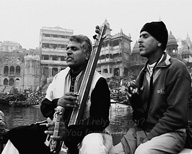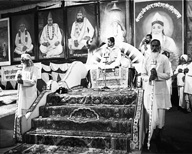Juror
Shabnam Virmani
 [Juror’s Statement]
[Juror’s Statement]
A vivid memory of Yamagata from my visit in 1997 was watching the enthusiasm and curiosity of the audiences— housewives, lay persons, city folk. I was amazed to see them come for late night screenings and avidly discuss issues and politics of societies from far-flung regions of the world with the visiting filmmakers. Where I come from in India, general audiences are far less interested in the documentary film form. So I’m really looking forward to dipping into the celebratory spirit and excitement for the documentary that I witnessed in Yamagata, and returning to it once again as a juror after a gap of over a decade is both a delight and an honor.
Despite critiques and dark predictions about the demise of the documentary as a film form, it persists. One of the reasons I personally continue to be inspired by it is not because it documents “reality,” but because it illuminates for us the blurry line between the real and the constructed. Even in our day-to-day lives we constantly weave between the spontaneous and the performative, and the presence of a camera heightens the tension between the two. For me, the magic of the documentary has been in capturing these spontaneous performative acts and expressions of ordinary people, and constructing them into artistic narratives. Real people in the midst of unscripted moments captured through the documentary with grace and poignancy hold the capacity of touching us very deeply, because there is something deeply dramatic in the unscripted day-to-day.
Shabnam Virmani has directed several award-winning documentaries and radio programs in close partnership with grassroots women’s groups in India. In 1990, she co-founded the Drishti media, arts, and human rights collective in Ahmedabad. For the past six years she has been artist in residence at the Srishti School of Art, Design, and Technology in Bangalore, and has been immersed in the Kabir project. As part of this project, she has directed four feature-length documentary films, curated and edited several music CDs and poetry books, and is currently working on co-creating a web-museum of Kabir’s poetry and music with the folk-singer community in India. Her To Be Alive! (1996) was screened at YIDFF ’97. |
Journeys with Kabir (4 Films)

- Bounded-Boundless (103 min)
Had-Anhad - Someone Is Listening (96 min)
Koi Sunta Hai - Come To My Country (98 min)
Chalo Hamara Des - In The Market Stands Kabir (94 min)
Kabira Khada Bazaar Mein
 INDIA / 2008 / Hindi, Punjabi, Urdu, Malwi, English / Color / Video
INDIA / 2008 / Hindi, Punjabi, Urdu, Malwi, English / Color / Video
Director, Photography, Sound: Shabnam Virmani
Script, Editing: Shabnam Virmani, Rikhav Desai
Animation: Orijit Sen, M.M. Pradeep
Researchers: Shabnam Virmani, Tara Kini
Direction & Production Support: Rumah Rasaque, Smriti Chanchani
Production Company, Source: Srishti School of Art, Design & Technology
www.kabirproject.org- Bounded-Boundless (103 min)
The four films that make up this personal road movie contemplate the 15th century mystical poet Kabir, who lives on in contemporary Indian philosophy and music. Kabir, who 600 years ago read poetry in bazaars and lived as one with the people, has become the focus of religious devotion, but also continues to live on in the spirit of social activists and in people’s lives. Bounded-Boundless, traces the boundaries of religion across India from east to west, and finally into Pakistan. Someone Is Listening turns a close ear to Kabir’s work, transformed into many different forms and still performed today. Come To My Country celebrates Kabir as a crosser of cultural borders, focusing on scholar Linda Hess and folk singer Prahlad Tipanya, who traveled with the director. In The Market Stands Kabir, depicts the struggle of the singer Tipanya, a Dalit whose life straddles the secular and religious sides of Kabir. Plunge through all four films, and immerse yourself in the rhythm and spirit of Kabir’s language, deeply rooted throughout India!
